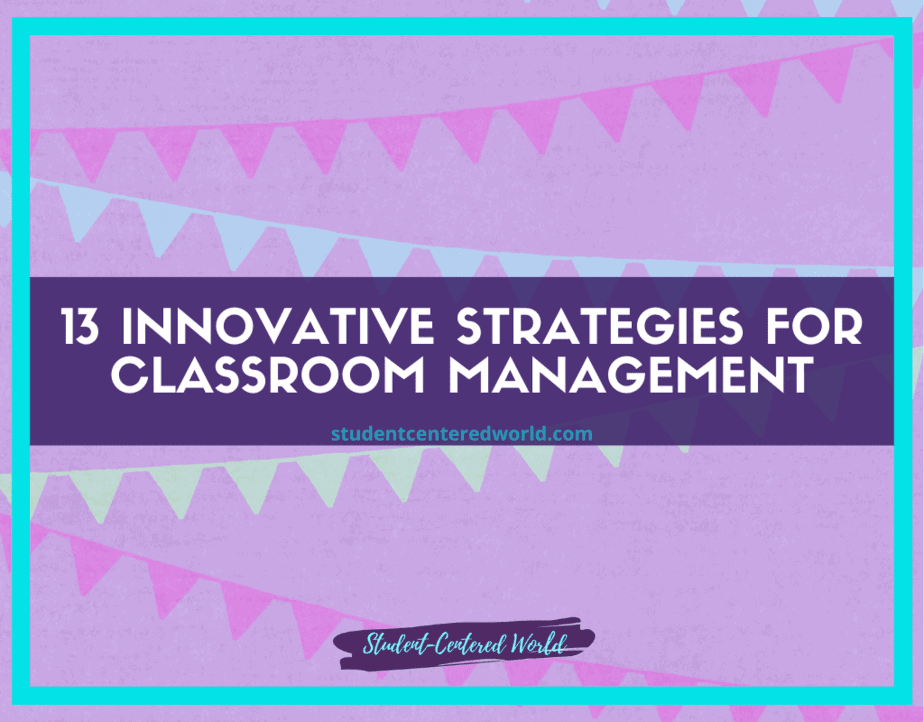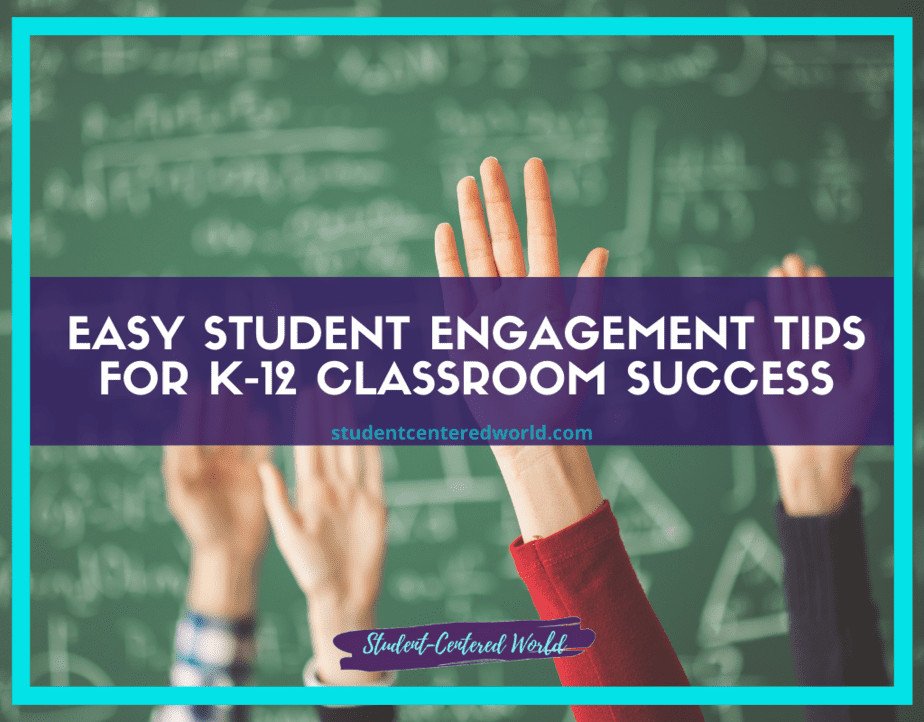Classroom Behavior Discipline Strategies for K-12 Student Management
Finding universal classroom behavior discipline techniques that are effective can be somewhat of a challenge. We have an expectation of what student behavior should look like and can identify inappropriate behavior as it happens, but as classroom teachers, how should we collectively address classroom behavior discipline problems?
Truly, disciplinary action in positive learning environments really does vary by grade level. This is also because negative behavior looks different for individual students at different levels of development. However, in a positive classroom environment, how can you quickly and effectively target behavior issues in front of the class and correlate them with effective classroom management strategies and daily routines?
Positive behavior support is key. It starts with the teacher’s self-awareness of how they are modeling behaviors in the classroom. It is also imperative to understand how these behaviors, which you model yourself, may be interpreted by students. Classroom management strategies should always be interactive and positive.

Positive behavior support is a key factor in classroom management and good behavior. This strategy focuses on teaching students alternate behaviors as well as reinforcing the desired ones. To do this, it is helpful to have a standard set of rules that all students understand and follow consistently to help eliminate behavior problems. For example, if your class already has established routines, you may want to encourage those by rewarding those who follow them or by giving students a warning for any deviations.
Record Keeping
Teachers may also want to use charts and checklists for recording their students’ behavior. This strategy might also provide motivation for them to control themselves in the learning process and especially during group work and instructional time. Encouraging students to fill out their own behavior charts is an excellent way to get them involved in the process of implementing positive behavioral interventions. It might also be helpful to use checklists for desired behaviors that you will not allow your class to deviate from.

One behavior management strategy that works well is to have students reinforce each other’s good behaviors. This way they are not only learning strategies for controlling their own behaviors but also how to be supportive of their peers as well. Sometimes the best school discipline is in the form of “positive peer pressure“. This works exceptionally well with older students with overall classroom behavior management.
Watching Film
Another positive classroom management strategy is to videotape your class and play the tapes back while you observe what disciplinary measures or strategies you could be used effectively, or which ones were not working well at all. This isn’t for the students, of course, but for you. Sometimes we act on behavior with what might seem like a good idea at the moment, but when you look back on those discipline strategies from “outside” of the situation and consider the aspects of emotional learning, behavior management strategies, intrinsic motivation, and that student (or students) specific needs, you might realize that your best practices in those moments need a bit of a shift…and that is okay!
No one is perfect and if you find you have a day of poor classroom management, it’s not the end of the world and it doesn’t mean you’re a bad teacher! It simply means that maybe you need to tweak your classroom management systems a bit to adjust to those students you currently have. Maybe you need to revisit classroom expectations or just brush up on some new ideas in classroom management skills. We are always honing our craft as teachers, and there’s no shame in that.
Classroom management strategies should always be interactive and positive. For example, you may try engaging students to participate in class activities that foster good social skills like cooperation and conflict resolution. Dealing with disruptive behavior with your students takes maturity and patience on your part. At the end of the day, if we find a way to negate poor behavior and accomplish student learning, we are doing our young people a huge service by ineffective instruction and adjusting behavioral problems with positive attitudes.
Here are some key questions for teachers to consider when trying to target disruptive behaviors in their classrooms:
How do the students in my classroom present themselves?
Looking at your class as a whole, what is your general impression? Is there a huge difference between the behavior of certain students and that of others? By identifying with these questions, teachers can also assess areas in which they need to improve their skills in order to effectively target classroom management strategies.
It is not possible for every student in a class to be on task or engaged at every moment. It takes teachers a lot of energy and time each day to keep their classes on track.
What communication tools for misbehavior have I taught them and how do they apply those strategies to their daily routines and interactions with peers and adults?
There is often a misconception that a student should just understand the classroom management technique you want them to follow. However, it is important to take some time at the beginning of the year to actually teach these strategies so they become second nature.
Once they are in place, then you can analyze how your students interact with one another and determine if the tools you have given them are effective.
Teachers need to be aware of the ways in which individual students choose to react and how they try to resolve conflicts. For example, if a student usually tries to ignore disruptive behavior from his classmate, but now he is starting up a conflict himself, you need to try and determine why.

To help you assess how your students react, consider having a training session with the whole class to model appropriate behavior. Teacher modeling strategies are a great way for teachers to manage their classroom environment as well as give students a concrete example of what is expected from them.
There is no single effective way to manage classroom behavior, but there are strategies that work for individual teachers and their unique classrooms. The key to maintaining order as a teacher is to always be thinking of new ways to motivate both yourself and your students.
It may take some trial and error before you find the techniques that work best for you.
Once you find what you believe is the most effective method, spend some more time studying your students to see if there are any subtle changes that need to be made. If you notice that certain strategies are not working for you or your class anymore, then try coming up with new classroom management techniques and give them another chance.
Do we already have a system of rewards and consequences in place, or is it time to introduce some new ones?
It is important not to always treat all students the same. Some might need more of a reminder or be physically closer to you in order to truly grasp your explanations of how your class works. Others may just need an occasional break from too much stimulation.
It is also helpful to keep in mind that your tone of voice when yelling commands can be quite different from when you are speaking more calmly. Calm teachers are much less likely to trigger fear or anxiety in their students.
It is also important to watch how you interact with students who are already known for challenging behavior and to avoid words and phrases that they might perceive as hurtful. Once these students feel excluded, their disruptive behavior will likely increase.

There are several ways of making sure you are not treating your troublemakers the same way as the rest of your class.
It is much less effective to address a student’s bad behavior without also taking the time to make sure they understand why it is important not to repeat the mistake again. The first step should always be to try and determine how your students came up with that particular idea. Even if you do not agree with their logic, it is still helpful for you to understand how they came up with the conclusion that they did.
Even if your students do not completely agree with your reasoning, it is important for them to feel as though you tried to see their point of view.
If a student feels like their ideas were ignored from the beginning, they will have no motivation to try and make better choices.
As a teacher, it is crucial for you to remember that your students are not always aware of all the rules and do not know what is allowed or not allowed in every situation.
How you react at the moment will contribute greatly to how your students perceive you as a teacher and their respect for you.
At the end of the day, an orderly learning environment may not always be possible, but having your entire class on board to stop problem behaviors before they start (or progress) is the key to student achievement and student success.
Stop Driving the Teacher Struggle Bus
Are you struggling with student engagement, apathy, or keeping your class on track?
💫💫 There’s hope! 💫💫
Join my free teacher workshop “Choosing Choice” and in just 60 minutes, you’ll craft a practical plan to revitalize your teaching. Discover the magic of student choice in boosting engagement, gain quick implementation ideas, and explore strategies for year-long success.
Unlike overwhelming workshops, my approach guides you in real-time, providing more classroom options, reducing stress, and giving you more personal time.
Plus, you’ll earn a 1-hour professional development certificate and have 7 days of access.
Don’t miss this chance to transform your teaching; click below to secure your spot now!






